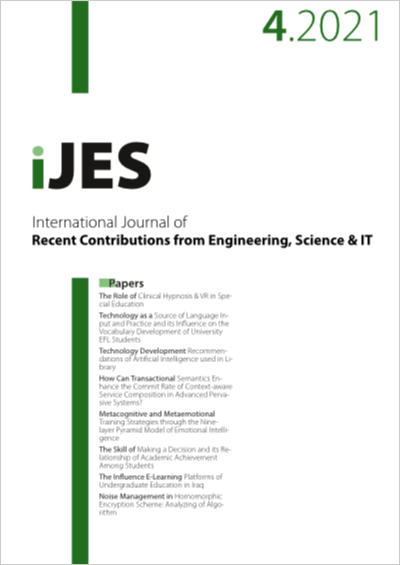Noise Management in Homomorphic Encryption Scheme: Analyzing of Algorithm
DOI:
https://doi.org/10.3991/ijes.v9i4.25993Keywords:
Noise, Encryption homomorphic, Bootstrapping, modulus switching, noise managementAbstract
Homomorphic encryption is the Swiss army of cryptography. It allows to perform computations on encrypted data. this conjecture of processing on encrypted data was stated by [RAD78]. Until Gentry breakthrough in 2009, only partial solutions were offered. They deal with encrypted data with bounded functions in operations.
Gentry raised the bound of number of operations by introducing a new method called the bootstrapping. This method allows to reduce the noise in the ciphertext and to perform more computing on it.
Since Gentry's breakthrough, several improvements and several alternatives to the bootstrapping technique have been proposed to improve execution time and reduce resource consumption.
This article studies the growth of noise and the noise management strategy in homomorphic encryption. It also presents the trend of hoping strategy from 2009 to 2016. Through the DGHV, it shows the management of noise on a one-bit encrypted message.
Downloads
Published
How to Cite
Issue
Section
License
Copyright (c) 2021 PAULIN BOALE BOMOLO

This work is licensed under a Creative Commons Attribution 4.0 International License.
The submitting author warrants that the submission is original and that she/he is the author of the submission together with the named co-authors; to the extend the submission incorporates text passages, figures, data or other material from the work of others, the submitting author has obtained any necessary permission.
Articles in this journal are published under the Creative Commons Attribution Licence (CC-BY What does this mean?). This is to get more legal certainty about what readers can do with published articles, and thus a wider dissemination and archiving, which in turn makes publishing with this journal more valuable for you, the authors.
By submitting an article the author grants to this journal the non-exclusive right to publish it. The author retains the copyright and the publishing rights for his article without any restrictions.
This journal has been awarded the SPARC Europe Seal for Open Access Journals (What's this?)


